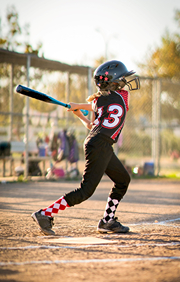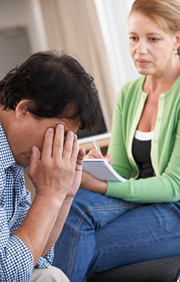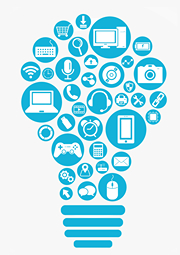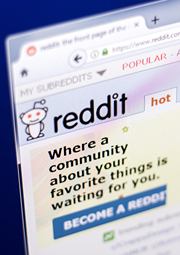Substance abuse can be a complicated and challenging road to travel. The impact and importance of understanding substance abuse treatment cannot be overstated. Treatment and recovery are not one-size-fits-all. They are a unique journey for each individual. Navigating this path requires support, patience, and a willingness to learn and grow.
As well explore everything there is to know about substance abuse treatment, we’ll discover various approaches, therapies, and support systems available. Our goal is to help individuals on their journey to recovery and gain important knowledge about the process, from the initial steps to long-term success.
Different Types of Substance Abuse Treatment
There are various types of substance abuse treatment available. This depends on the specific needs and circumstances of the individual seeking help. It’s often a a priority for most people to find a local drug rehab program that is close to family, which is a positive goal as long as they find the services the need.
Counseling and Therapy
Counseling and therapy are key to treating substance abuse. They provide a safe space for individuals to explore the causes of their addiction.
Therapy offers a safe space for individual sessions. There, clients can discuss their experiences, emotions, and behaviors related to substance use.
These therapies aim to help clients build better relationships. Regular counseling and therapy can help people regain control of their lives.
It can build resilience and promote a healthier lifestyle. An alcohol abuse treatment center may offer different types of therapy.
Medication-Assisted Treatment
Sometimes, doctors may prescribe medication to ease withdrawal and cravings during recovery. These meds can also treat any mental health issues that fuel substance abuse.
A medical professional will monitor the patient and adjust the medication as needed. This will ensure the best results.
A health treatment facility may offer a range of medication-assisted treatment options. This can include detox, maintenance therapy, and meds for ongoing support in recovery.
Group Support
Group support is an integral part of substance abuse treatment. It gives people a place to connect with others facing similar struggles. They can receive encouragement from those who understand their journey.
Group therapy can provide community and accountability. This promotes long-term recovery.
Emotional support from an addiction treatment center can help. It can help people.
It can develop coping skills, improve communication, and build relationships. This can greatly contribute to maintaining sobriety.
Holistic Approaches
Many substance abuse treatment programs also incorporate holistic approaches to healing. These include yoga, meditation, mindfulness, art therapy, and exercise.
Holistic methods aim to heal the mind, body, and spirit. They promote well-being and aid recovery.
Proper exercise, good nutrition, and self-care can help manage stress. They can also reduce the risk of relapse. By using these practices daily, people can boost their health and aid their recovery.
Family Involvement
Substance abuse treatment must address any family issues that may cause the addiction. Family therapy can repair relationships. It also educates and supports loved ones.
Involving family in recovery can strengthen bonds. It creates a more supportive environment for lasting sobriety.
Talking to parents about addiction can be hard. But it’s vital to involve family in recovery. It fosters communication and understanding of their struggles. This helps create a more supportive recovery environment.
Residential Treatment Programs
Residential treatment programs provide 24-hour care in a supportive environment. They are ideal for those needing intensive care and supervision. These programs often last from 28 days to 6 months, depending on the individual’s needs.
In a residential setting, patients can focus entirely on their recovery. They are free from external pressures and distractions. These programs include therapeutic activities like counseling, group therapy, workshops, and recreation.
Residential treatment is immersive. It helps build healthy habits, promote sobriety, and boost resilience. This lays a strong foundation for lasting recovery.
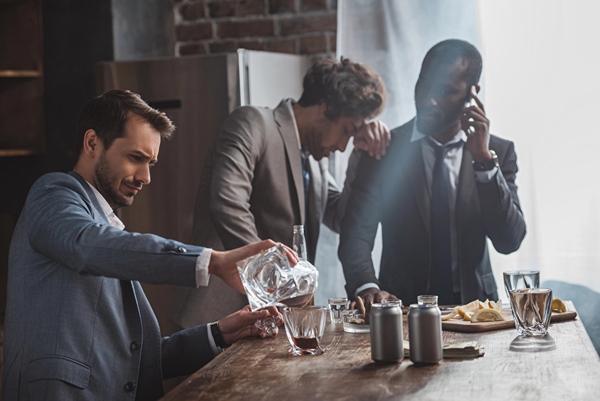
Stages of Substance Abuse Treatment
Substance abuse treatment usually has stages, each with a specific purpose. Here are some of the common stages of treatment.
Assessment
One of the steps in treating substance abuse is a full assessment by a medical professional. It covers the person’s and family’s history, substance use, and mental health issues. This assessment aims to find the best treatment plan for the individual.
Substance abuse treatment centers may also do a health check. This includes drug tests and other medical evaluations. The goal is to find any health issues that may affect the person’s recovery.
Detoxification
Detoxification is one of the steps in substance abuse treatment. This process involves removing all substances from the body.
It must also manage any withdrawal symptoms. A medically supervised detox can ensure a safe, comfortable experience.
A detox program may use medication to help with withdrawal and cravings. This can increase the chances of a successful and sustainable recovery. It will also prepare individuals for the next stage of treatment.
Aftercare
Recovery does not end after finishing a substance abuse treatment program. Aftercare is a critical stage in maintaining sobriety and preventing relapse.
Aftercare is ongoing support. It includes counseling, therapy, and other resources. These help individuals cope with challenges and stay in recovery.
Aftercare can include support groups, sober living communities, and ongoing therapy. The goal is to give people the tools and support to succeed in their recovery.
Factors to Consider When Choosing a Substance Abuse Treatment Program
When seeking substance abuse treatment, find a program that fits your needs. Here are some key factors to consider when choosing a treatment program.
Treatment Approach
Selecting the right treatment approach is crucial for substance treatment. Different programs may use various methods, like CBT, motivational interviewing, or 12-step facilitation. It’s vital to pick a program that matches the person’s beliefs, values, and needs.
A good treatment plan often combines therapies. It should address the person’s unique addiction and mental health issues.
Also, check if the program uses both evidence-based and alternative therapies. This can help provide a holistic and effective recovery experience.
Program Length and Location
A treatment program’s length can vary. It depends on the person’s needs and progress. Some programs may last for 30 days.
Others may offer 60 or 90-day options. You must consider the program’s length. Does it fit your schedule?
Additionally, location plays a significant role in choosing a treatment program. A local option may be more convenient.
But some may benefit from getting away from triggers and negative influences. They could do this by attending a program in another city or state.
Cost and Insurance Coverage
Substance abuse treatment can be costly. But many programs offer payment plans or scholarships to make it more accessible.
It’s crucial to consider the program’s cost. Also, check if it accepts insurance or offers financial aid.
Also, checking if the program is accredited can help. It ensures quality care and maximizes insurance benefits. It can also help avoid scams that prey on vulnerable people seeking help.
Staff Credentials and Experience
A vital but often overlooked factor is the staff’s qualifications and experience. Using medical professionals and skilled therapists on the team can greatly improve treatment. Their expertise in treating substance use disorders is key.
Also, a multidisciplinary team can provide comprehensive care. They can address all aspects of a person’s recovery. This includes any co-occurring mental health disorders.
Support Services Offered
A treatment program’s support services can improve recovery. They can help after primary treatment. Seek programs with aftercare planning, family support, and access to support groups.
These services are vital for long-term sobriety and rejoining daily life. Ongoing support can help people. It can build skills, create healthy relationships, and form a strong support network. These are essential for successful recovery.
Personalized Treatment Plans
A key aspect of effective substance abuse treatment is personalized plans. Each person’s journey through addiction and recovery is unique. It requires a tailored approach to address their specific challenges and goals.
Personalized treatment plans use various therapies, medications, and support systems. They are tailored to an individual’s physical, mental, and emotional needs.
These plans can adapt to changing needs through tests and patient feedback. This ensures flexibility and responsiveness during recovery.
Personalized plans focus on overcoming addiction and on personal growth. They help clients adopt healthier lifestyles, improve relationships, and sustain recovery.
This approach boosts the person’s resilience and empowerment. It helps them build a better future beyond substance abuse.
Challenges in Substance Abuse Treatment
All treatment plans aim for success. But individuals may face challenges. Here are some of the common obstacles faced during substance abuse treatment.
Withdrawal Symptoms
Withdrawal symptoms can be mild or severe. They can cause physical and mental distress. This makes it hard for people to stay sober.
These symptoms may include nausea, headaches, anxiety, depression, and intense cravings.
A medically supervised detox and medication-assisted treatment can help. They can manage these symptoms and reduce their impact on recovery.
Mental Health Disorders
Substance abuse often occurs with mental health disorders, like depression, anxiety, or PTSD. These conditions can worsen substance abuse. They make long-term recovery harder.
Programs that treat both substance abuse and mental health issues can improve recovery. This requires integrated treatment plans. They must combine therapy, medication, and support for both disorders.
Relapse
Relapse is a common challenge faced by individuals in substance abuse treatment. It refers to returning to substance use after a period of abstinence. Stress, boredom, and triggers can increase the risk of relapse. This can lead to guilt and shame.
However, relapse does not mean failure. It shows a need for ongoing support and treatment. Aftercare, support groups, and therapy can help prevent relapse.
Stigma and Shame
Many feel ashamed or stigmatized due to their addiction. This makes it hard to seek help or share their struggles. This stigma can also prevent loved ones from offering support and understanding.
Safe, non-judgmental substance abuse treatment programs can help. They can overcome barriers and focus on recovery.
Educating the public about substance abuse can reduce stigma. This can create a supportive community for those seeking help with addiction.
Lack of Support System
Having a strong support system is crucial for individuals undergoing substance abuse treatment. However, many may lack family or community support. This can make recovery even more challenging.
Lacking support can increase feelings of isolation and helplessness. It can hinder progress.
Support groups and counseling in treatment programs can help. They provide belonging and encouragement to those trying to overcome addiction.
Financial Constraints
Financial constraints can make it hard to access and continue substance abuse treatment. Some individuals find treatment programs too expensive. This is especially true for those without insurance or with limited funds. This challenge can cause people to delay seeking help or to stop treatment early.
Finding programs with sliding scale fees, scholarships, or payment plans may help. It could ease this barrier and improve access to needed care.
Resistance to Change
A common challenge in substance abuse treatment is resistance to change. Resistance can show as denial, ambivalence, or defiance toward treatment. This is due to a fear of change, loss of identity, or attachment to the substance.
Motivational interviewing and other therapies can help. They can overcome resistance by boosting self-motivation and a desire for health. Encouraging individuals to envision a future without drugs can boost their recovery.
Limited Access to Resources
Access to resources can be a major issue for those seeking substance abuse treatment. In rural or underserved areas, treatment facilities are often sparse.
Transportation options may be limited. This makes it hard for people to attend regular therapy sessions or support groups. The digital divide can hinder access to online therapy and telehealth.
Expanding infrastructure and promoting the use of technology can help bridge this gap. It can provide more inclusive support for those in need.
Co-occurring Substance Use
Addiction to multiple substances presents unique challenges. Poly-substance use needs specialized treatment.
It must address multiple dependencies at once. This usually involves therapy that integrates approaches for each substance. It also addresses the root causes of the multiple addictions.
Programs with thorough tests can better address co-occurring substance use disorders. This can improve long-term recovery outcomes. It also helps prevent relapse and promotes improved overall health.
Social and Environmental Influences
Social and environmental factors can greatly affect a person’s recovery from substance abuse. Many face peer pressure to use substances or go to places where they are available. This can make it difficult to break free from old habits and form new, healthier lifestyles.
A lack of access to education, jobs, or safe housing can hinder recovery. These things provide stability and support sobriety.
Supportive environments can help people resist negative influences and stay in recovery. Peer mentors, recovery coaches, and sober living communities can help.
Learning the Right Substance Abuse Treatment
Substance abuse treatment is a journey. It needs careful planning to succeed.
By considering factors, individuals can make informed decisions about their care. With the right support, people can overcome addiction. They can then build happy, drug-free lives.
If you enjoyed this article and would like to read more like it, please check out the rest of our blog today.


